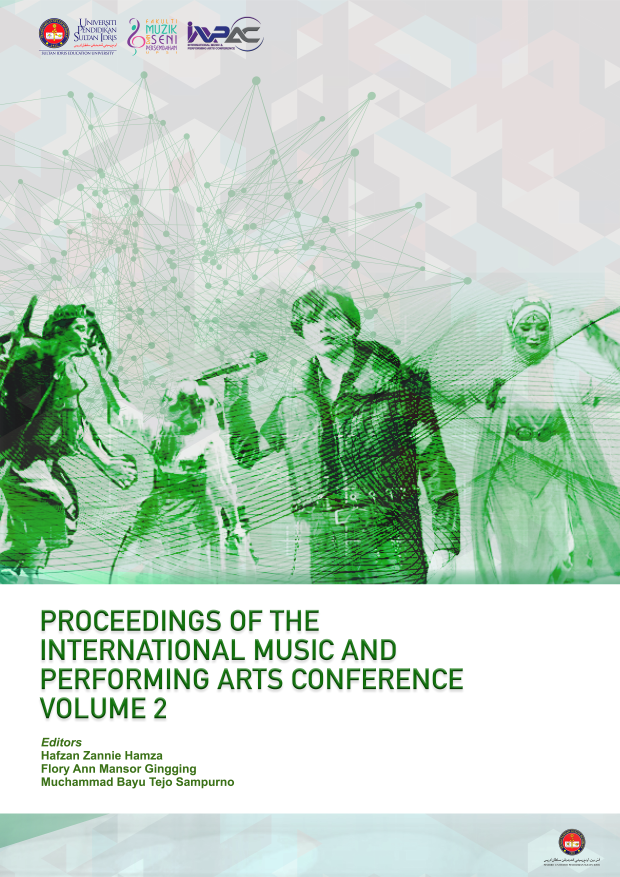Being Bimusical in the Era of Globalization: The Case of Four Folk Brass Musicians of Younger Generation in Greece
DOI:
https://doi.org/10.37134/impac.v2.6.2024Keywords:
bimusicality, brass instruments, cultural identity, globalization, secondary orality, technologyAbstract
Brass instruments hold a central place in various folk music traditions of Greece. Although foreign to Greek music, these instruments began being introduced to specific regions (e.g., Central and Western Macedonia, Lesvos Island) in the mid-19th century. Interestingly, despite their “foreign western origin,” locals today consider them an integral part of their cultural identity. In this paper, we examine the profiles of four young musicians (trumpet, trombone, euphonium, and tuba performers) who are professionally engaged in traditional music. The qualitative data collected through semi-structured interviews with the participants highlight the significant impact of globalization and technology on the development of a bimusical profile. All four participants demonstrated remarkable comfort in playing various types of music (e.g., classical music, jazz) beyond the traditional folk music of their homeland. In addition, it is worth noting the importance they attributed to technology—particularly audio recording tools—as a means of developing their musicality. These tools can be considered as instruments of “secondary orality,” adopting Walter Ong’s term.
Downloads
References
Baltzis, A. G. (2005). Globalization and musical culture. Acta Musicologica, 77(1), 137–150. http://www.jstor.org/stable/25071251
Chatzimanolis, E. (1995). Ta chalkina pnefsta stis laikes companies tis Dytikis Makedonias [Brass instruments in folk ensembles of Western Macedonia] [Unpublished bachelor’s thesis]. Aristotle University of Thessaloniki.
Chianis, S. (1981). Epirotika with Periklis Halkias: Greek folk music and dances recorded in New York. Folkways Records.
Deschênes, B. (2018). Bi-musicality or transmusicality: The viewpoint of a non-Japanese shakuhachi player. International Review of the Aesthetics and Sociology of Music, 49(2), 275–294. https://www.jstor.org/stable/26844647
Dionysopoulos, N. (1997). Lesvos Aeolis: Tragoudia ke skopi tis Lesvou [Lesvos Aeolis: Songs and tunes of Lesvos]. Crete University Press.
Dionyssiou, Z. (2000). The effects of schooling on the teaching of Greek traditional music. Music Education Research, 2(2), 141–163. https://doi.org/10.1080/14613800050165613
Dionyssiou, Z. (2002). Prosegisi stin didaskalia tis ellinikis paradosiakis mousiki [Approach to the teaching of Greek traditional music]. Mousiki Ekpedefsi, 2(3), 154–168.
Hood, M. (1960). The challenge of “bi-musicality.” Ethnomusicology, 4(2), 55–59. https://doi.org/10.2307/924263
Isbell, D., & Stanley, A. M. (2018). Code-switching musicians: An exploratory study. Music Education Research, 20(2), 145–162. https://doi.org/10.1080/14613808.2016.1238061
Kofteros, D. (1996). Ena gaidouri gia didaktra [A donkey for fees]. Paradosi ke Techni, 29(1), 15.
Liavas, L. (1996). Aftoschediasmos sti laiki mousiki: Eleftheria ke ypotagi [Improvisation in folk music: Freedom and submission]. Difono, 28(1), 86.
Loutzaki, I. (1994). Greek folk dance music. Yearbook for Traditional Music, 26, 168–179. https://doi.org/10.2307/768264
May, L. F. (2005). Early musical development of selected African American jazz musicians in Indianapolis in the 1930s and 1940s. Journal of Historical Research in Music Education, 27(1), 21–32. http://www.jstor.org/stable/25597915
Mazaraki, D. (1984). To laiko klarino stin Ellada [Folk clarinet in Greece]. Kedros. (Original work published 1959)
Nikolakakis, G. (2000). Prosopografies laikon mousikon [Folk musicians’ portraits]. In S. Chtouris (Ed.), Mousika stavrodromia sto Egeo (Lesvos 19os–20os eonas) [Musical crossroads in Aegean (Lesvos 19th–20th century)] (pp. 243–310). Exantas.
Ong, W. (1982). Orality and literacy: The technologizing of the word. Routledge.
Skamnelos, M., & Dionyssiou, Z. (2022). Ekmathisi mousikon organon tis Ellinikis laikis mousikis meso video sto YouTube: Erevna analysis periechomenou [Learning musical instruments of Greek folk music through YouTube videos: A content analysis investigation]. In P. Vouvaris, K. Kardamis, G. Kitsios, E. Spyrakou, I. Steinhauer, & I. Foulias (Eds.), Proceedings of the 12th Interdepartmental Musicological Conference (pp. 387–405). Hellenic Musicological Society.
Ververis, A. (2019). Traditional instruments in public music secondary schools and universities of Greece: Methods of transmission and teaching. Živá hudba, 10(1), 72–84.
Ververis, A. (2021). “Mathenete, alla didaskete?” I didaskalia tis ellinikis paradosiakis mousikis se perivallonta typikis ke atypis mathisis [“It is learned, but can be taught?” The teaching of Greek traditional music in formal and non-formal learning environments]. In A. Ververos & I. Litos (Eds.), Zitimata didaktikis ton mousikon organon: Gefironontas theoria ke praxi [Issues of teaching music instruments: Bridging theory and practice] (pp. 25–44). Disigma.
Ververis, A. (2023). “Between East and West”: Choral syncretism on the two sides of the Aegean. International Choral Magazine, 42(2), 3–5.
Zoubouli, M., & Kokkonis, G. (2016). I scholiki mousiki ekpedefsi: Mia istoria diachronikis logokrisias [School music education: A story of constant censorship]. In D. Christopoulos & P. Petsini (Eds.), Logokrisies stin Ellada [Censorships in Greece] (pp. 185–193). Rosa Luxembourg Foundation.
Downloads
Published
Issue
Section
License
Copyright (c) 2024 Antonis Ververis (Author)

This work is licensed under a Creative Commons Attribution-NonCommercial-NoDerivatives 4.0 International License.
Authors retain copyright and grant the Proceedings of the International Music and Performing Arts Conference (IMPAC Proceedings) the right of first publication.
This licence permits unrestricted use, distribution, and reproduction in any medium, provided the original work is properly cited.




